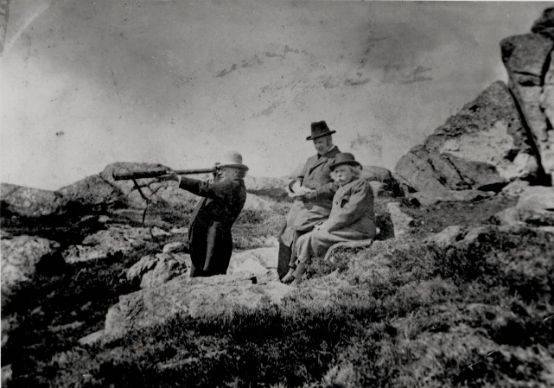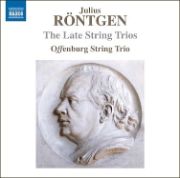X-ray? A musician?
These late string trios provide unrealized possibilities of late Romantic music.

Anyone who first thinks of the diagnostic possibilities of radioactive rays when they hear the name Julius Röntgen is not entirely wrong. The German-Dutch pianist and composer (*1855 in Leipzig, †1932 in Utrecht) was distantly related to the physicist Wilhelm Conrad Röntgen (1845-1923). Julius Röntgen's youngest son Joachim worked as concertmaster of the Winterthur Municipal Theater from 1928 and was first violinist in the Lucerne Festival Orchestra under Toscanini in 1938/39.
As a composer, Julius Röntgen emerged from the conservative Leipzig School, was associated with Brahms, but also absorbed influences from Grieg, Reger and Debussy. He wrote 21 symphonies, 14 concertos, two operas as well as songs and chamber music. His compositions have recently been rediscovered. Symphonies 3, 8, 15 and 18 as well as the violin, cello and piano concertos are already available on nine CDs (all on cpo).
And now the Offenburg String Trio has recorded Röntgen's late string trios. Cellist Martin Merker, who has also been active as a cellist with the Camerata Bern for many years, writes in his informative booklet text: "Julius Röntgen composed the string trios exclusively for playing music with his sons in the family circle, with the composer himself taking on the viola part."
The following were recorded Trios Nos. 13 to 16 from the years 1925-1930 are stylistically out of their time, are far removed from dissonant or even atonal harmony, but never seem boring or even hackneyed. They are all compositions of a high technical and artistic standard. Röntgen also had newer compositional techniques at his disposal, as his last works show, in which he experimented with atonality, bitonality and jazz influences. However, they are not used in the string trios.
The Trio No. 13 in A major (1925) sounds a little like Schubert, Mendelssohn and Brahms - albeit without direct stylistic reminiscences. In the Trio No. 14 in C minor (1928), Röntgen's own tone becomes clearer, a delicate and original exploration of the unexplored harmonic and structural possibilities of late Romantic music. The Trio No. 15 C sharp minor (1929) was composed on a five-week road trip, which also took Röntgen and his family through Switzerland. The "Finale automobilistico: Allegro energico" incorporates incidents in Reichenbach and Meiringen. The Trio No. 16 in C sharp minor (1930) crowns his work for this instrumentation in its depth of expression and stylistic homogeneity.
The Offenburg String Trio has recorded these works in an emotionally moving as well as tonally and technically sophisticated way, demonstrating that an encounter with Röntgen's music can still be an experience today.
Julius Röntgen: The Late String Trios. Offenburg String Trio (Frank Schilli, violin; Rolf Schilli, viola; Martin Merker, violoncello). Naxos 8.573384








